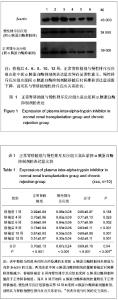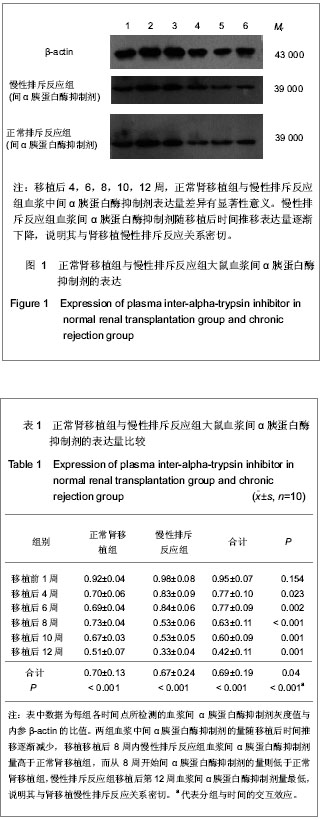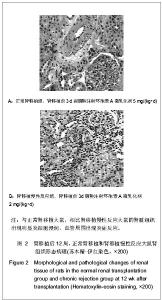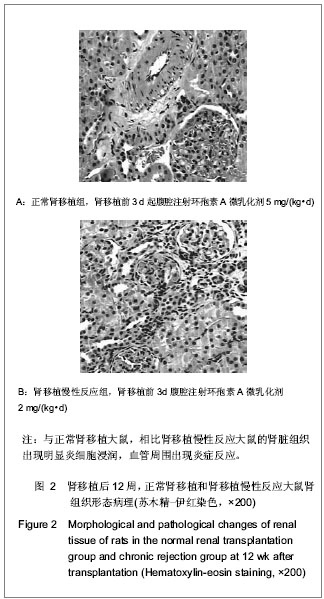| [1] Chaaban H, Shin M, Sirya E, et al. Inter-alpha inhibitor protein level in neonates predicts necrotizing enterocolitis. J Pediatr. 2010;157(5):757-761.[2] Garantziotis S, Hollingsworth JW, Ghanayem RB, et al. Inter-alpha-trypsin inhibitor attenuates complement activation and complement-induced lung injury. J Immunol. 2007;179(6): 4187-4192.[3] Salier JP, Rouet P, Raguenez G, et al. The inter-alpha-inhibitor family: from structure to regulation. Biochem J. 1996;315(Pt 1):1-9.[4] Singh K, Zhang LX, Bendelja K, et al. Inter-alpha inhibitor protein administration improves survival from neonatal sepsis in mice. Pediatric Res. 2010;68(3):242-247.[5] Chaaban H, Shin M, Sirya E, et al. Inter-alpha inhibitor protein level in neonates predicts necrotizing enterocolitis. J Pediatr. 2010;157(5):757-761.[6] Jayapalan JJ, Ng KL, Shuib AS, et al. Urine of patients with early prostate cancer contains lower levels of light chain fragments of inter-alpha-trypsin inhibitor and saposin B but increased expression of an inter-alpha-trypsin inhibitor heavy chain 4 fragment. Electrophoresis. 2013.[7] Seifert G, Kurzinger RP, Hopt UT, et al. Systemic differential gene regulation of the inter-alpha-trypsin inhibitor family in acute necrotizing pancreatitis in mice. J Surg Res. 2013;180(2):e83-90.[8] Garcia-Gil FA, Lampreave F, Fuentes-Broto L, et al. Inter-alpha-trypsin inhibitor heavy chain 4 as a marker of acute rejection in pancreas allotransplantation in pigs. Transplant Proc. 2010;42(8):3063-3069.[9] Molloy SS, Bresnahan PA, Leppla SH, et al. Human furin is a calcium-dependent serine endoprotease that recognizes the sequence Arg-X-X-Arg and efficiently cleaves anthrax toxin protective antigen. J Biol Chem. 1992;267(23): 16396-16402.[10] Artenstein AW, Opal SM, Cristofaro P, et al. Chloroquine enhances survival in Bacillus anthracis intoxication. J Infect Dis. 2004;190(9):1655-1660.[11] Moayeri M, Haines D, Young HA, et al. Bacillus anthracis lethal toxin induces TNF-alpha-independent hypoxia-mediated toxicity in mice. Clin Investig. 2003;112(5): 670-682.[12] Yang S, Lim YP, Zhou M, et al. Administration of human inter-alpha-inhibitor maintains hemodynamic stability and improves survival during sepsis. Crit Care Med. 2002;30(3): 617-622.[13] Baek YW, Brokat S,Padbury JF, et al. Inter-alpha inhibitor proteins in infants and decreased levels in neonatal sepsis. J Pediatr. 2003;143(1):11-15.[14] van den Broek I, Sparidans RW, van Winden AW, et al. The absolute quantification of eight inter-alpha-trypsin inhibitor heavy chain 4 (ITIH4)-derived peptides in serum from breast cancer patients. Proteomics Clin Appl. 2010;4(12):931-939.[15] Kobayashi H, Gotoh J, Kanayama N, et al. Inhibition of tumor cell invasion through matrigel by a peptide derived from the domain II region in urinary trypsin inhibitor. Cancer Res. 1995;55(9):1847-1852.[16] Paris S, Sesboue R, Delpech B, et al. Inhibition of tumor growth and metastatic spreading by overexpression of inter-alpha-trypsin inhibitor family chains. Int J Cancer. 2002; 97(5):615.[17] Naesens M, Salvatierra O, Benfield M, et al. Subclinical inflammation and chronic renal allograft injury in a randomized trial on steroid avoidance in pediatric kidney transplantation. Am J Transplant. 2012;12(10):2730-2743.[18] Kruger B, Walberer A, Debler J, et al. Is inflammation prior to renal transplantation predictive for cardiovascular and renal outcomes? Atherosclerosis. 2010;210(2):637-642.[19] Liu YG, Meng LL, Jiang ZM. Shenzangbing yu Touxi Shenyizhi Zazhi. 1999;8(2):127-129.刘亚革,孟露璐,姜志明,等.慢性排斥患者移植肾组织中肥大细胞亚类分析[J].肾脏病与透析肾移植杂志,1999,8(2):127-129.[20] Pardo J, Diaz L, Errasti P, et al. Mast cells in chonic rejection of human renal allografts. Virchows Arch. 2000;437(2):167-172.[21] Yousem SA. The potential role of mast cells in lung allograft rejection. Hum Pathology. 1997;28(2):179-182.[22] Hayry P, Isoniemi H, Yilmaz S, et al. Chronic allograft rejection. Immunol Rev. 1993;134:33-81.[23] Johnson GB,Brunn GJ,Platt JL.Cutting edge:an endogenous pathway to systemic inflammatory response syndrome(SIRS)-like reactions through Toll-like receptor 4. J Immunol. 2004;172(1):20-24.[24] Faria MS, Reis FC, Azevedo-Pereira RL, et al. Leishmania inhibitor of serine peptidase 2 prevents TLR4 activation by neutrophil elastase promoting parasite survival in murine macrophages. J Immunol. 2011;186(1):411-422.[25] Pei JH, Yuan ZH. Lichuang Gandan Zazhi. 2005;21(4):261.裴继华,袁志芳.核因子-kB在急性胰腺炎治疗中的意义[J].临床肝胆病杂志,2005,21(4):261.[26] Wang XL, Zhang H, Liu R. Zhongguo Weizhongbing Jijiuyixue. 2003;15(7):432-434.王晓林,张宏,刘荣,等.乌司他丁对肝缺血再灌注后急性肺损伤的保护作用[J].中国危重病急救医学,2003,15(7):432-434.[27] Cao LJ, Wang J, Hao PP, et al. Effects of ulinastatin, a urinary trypsin inhibitor, on synaptic plasticity and spatial memory in a rat model of cerebral ischemia/reperfusion injury. Chin J Physiol. 2011;54(6):435-442.[28] Okamoto T, Inagaki Y, Aoki T. Use of ulinastatin for improving the viability of liver grafts. Transplantation Proc. 1993;25(5): 2961-2964.[29] Wei L, Liu B, Zhen ZS, et al. Linchuang Waike Zazhi. 2002;10 (2):112.魏来,刘斌,陈知水,等.乌司他丁促进移植肾功能早期恢复作用的临床研究[J].临床外科杂志,2002,10(2):112.[30] Plaas A, Sandy JD, Liu H, et al. Biochemical identification and immunolocalizaton of aggrecan, ADAMTS5 and inter-alpha-trypsin-inhibitor in equine degenerative suspensory ligament desmitis. J Orthop Res. 2011;29(6): 900- 906. |



